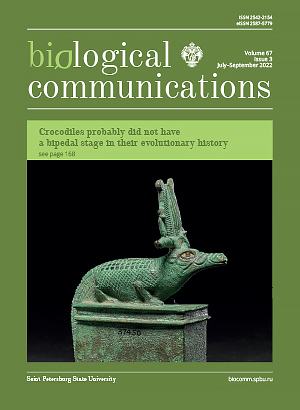Metaproteomic comparison of cryoconite communities from Caucasian and Novaya Zemlya glaciers
DOI:
https://doi.org/10.21638/spbu03.2022.308Abstract
Small cylindrical holes (cryoconites) appear in the early stages of glacier melt. While the microbiome of cryoconite is well described, differences in community compositions between various glaciers, especially between more or less polluted ones, still have not been fully understood. Here we performed the comparison of the cryoconite communities from the less polluted Caucasian (Kabardino-Balkaria) glaciers and from highly polluted glaciers in Novaya Zemlya by the shotgun metaproteomics approach which had not been used for cryoconite microbiome analysis previously. Metaproteomics has a whole range of limitations, but it is of great interest because it gains information about the functional state of communities. We identified 475 protein groups, a third of which were found in both glaciers. Proteins from Cyanobacteria dominated in both sites, but we found a slight shift to heterotrophic bacteria in the Caucasus.
Keywords:
cryoconite, metaproteomics, glacial, anthropogenic pollution, TimsToF Pro
Downloads
References
Downloads
Additional Files
Published
How to Cite
License
Articles of Biological Communications are open access distributed under the terms of the License Agreement with Saint Petersburg State University, which permits to the authors unrestricted distribution and self-archiving free of charge.





